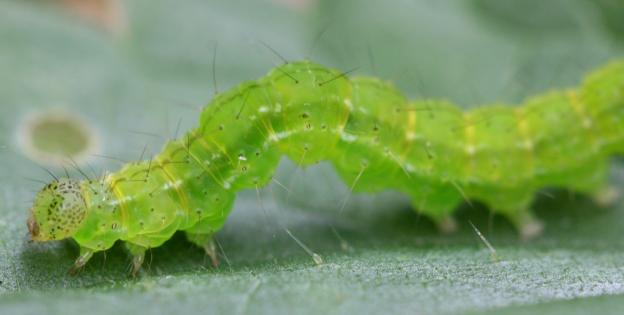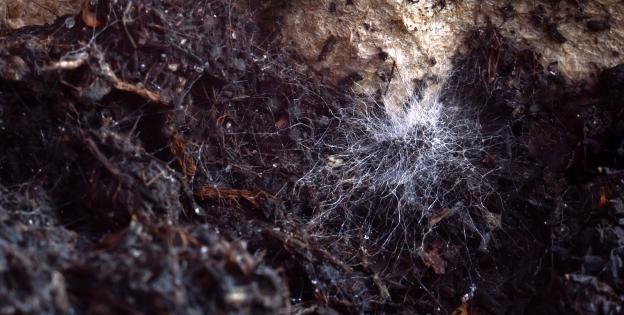Also known as gray mold, botrytis is a fungus that can attack your cannabis plants. However hard-to-beat it may seem, there are some techniques that can effectively prevent or destroy it. This fungus loves warm and damp environments and uses other animals, such as caterpillars, to move around and reach cannabis plants. It is also extremely contagious, so if you discover any infected plants, separate them from the rest as soon as possible to avoid further damage.

Indice
Also known as gray mold, botrytis is a parasitic fungus that can attack your cannabis plants at any time. It is important to know that there are some conditions that favor its proliferation and development: high humidity levels, sudden changes in temperature, or heavy rainfalls.
Everybody knows that the flowering phase is the most delicate moment as plants infected at this stage may suffer irreparable damage. Apart from weather conditions, there are other elements that could dramatically raise the likelihood of your plants being affected by botrytis mold, for instance caterpillars (their droppings can be a possible source of infection). Although the botrytis fungus is particularly difficult to fight, knowing how to take preventive action or how to react when it is already settled could help you kill it for good.
Keep reading to learn how to keep this fungus at bay before it ruins your cannabis grow.

What is botrytis or gray mold in cannabis
Botrytis or gray mold is one of the most common fungi found in cannabis plants. It normally develops in dead plant matter on the ground. Mycelium is the vegetative part of the fungus that can be found in plant debris and enables nutrient absorption. It is on this debris that the fungus can easily develop when temperature and humidity levels rise, making the end of spring the perfect time for its appearance, although it can also appear in the fall due to the increased rainfall.
In broad daylight, vegetative mycelia start to produce conidiophores with clusters of conidia that are later released and carried by air currents until they reach stems and leaves. Botrytis cinerea conidia are asexually produced spores that can remain alive for years until the conditions are favorable for their new development.
How to prevent botrytis cinerea in cannabis
The best way to control this fungus is by preventing it. Keeping your grow clean is vital to avoid the appearance of botrytis (this includes all the elements that come into contact with your plants). If infection has already set in, you can avoid its propagation by making sure the healthy plants are not in contact with the plants you believe might be infected. Their being too close will facilitate airborne infection: if a spore settles on your plants, they are very likely to end up infected.
Keep your cannabis grow clean, including your tools
Making sure the area where you are growing your plants is 100% clean is the best way to prevent the attack of the dreaded gray mold. The tools you use must be properly sterilized, including scissors, stakes, labels, etc. In addition, wear latex gloves whilst manipulating the plants and try not to rub them with clothes that have been worn in other areas. You should avoid touching the buds because the fungus can be transported through the air but also with the help of your hands. Do not forget to carefully remove any infected parts.
Ward off caterpillars
Keeping bugs and insects at bay, especially caterpillars, is really important because plant cuticles can get damaged by their bites, making it easier for the fungus to get inside.
Take preventive action during summertime to prevent this from happening. This way, you will restrict their presence during the flowering.
How to identify botrytis in your cannabis grow
A major problem for cannabis growers is identifying the infection at an early stage because the buds do not seem to be affected. One of the most evident indicators is necrosis on stems, leaves and branches, which turns the tissue brown and kind of damp. Another symptom indicating the presence of botrytis is the appearance of lighter circles on the buds, with a dark brown ring around them.
How to eradicate botrytis
If you suspect that the gray mold has already landed on your plants, the best course of action is to immediately remove all the affected parts. Always make sure you use sterilized tools for this. If you decide to get rid of some buds, best to also cut at least three centimeters below them. Then destroy all the infected areas.
How to fight botrytis indoors
If you are growing indoors, ensure proper air circulation and keep a close eye on the irrigation schedule. This way you can make sure humidity levels remain low, which is essential to the well-being of leaves and flowers. Never let moisture content exceed 50%.
But don't think the dangers will be over after harvesting since your flowers will still be at risk for a long while. During the drying stage, it is crucial to maintain humidity levels below 60%, and also to keep the area properly ventilated. The best way to do this is by installing a small extractor equipped with a carbon filter that maintains appropriate air and moisture levels.
How to fight botrytis outdoors
There are two elements that make open-air grows more susceptible to the attack of botrytis: rainfall and the fact that the plants can develop a really dense canopy. During summer, when plants are still growing and flowers have not reached maturity, they are unlikely to be attacked by this fungus. However, it is during advanced phases of flowering, towards the end of the summer or early in the fall, that the weather starts to change and rain becomes more common, resulting in poor circulation and excessively high moisture levels.
Pruning is also highly recommended as botrytis mold loves dense and bushy plants. Similarly, we can look for a growing method that allows for larger spaces between plants and teaches them to grow in such a way that they do not become too thick.
What to do with infected plants

If preventive action does not work, you can always use Neem oil, a very useful antifungal solution to fight infections caused by mildew, powdery mildew, botrytis, etc. Plant protection products also work really well. The market is full of options; all you have to do is pick the one that best suits your needs. You have to be fully aware of the risks posed by this infectious fungus and decide on the products and the intensity of the treatment accordingly.
It is also crucial to alternate different products so that the fungi do not become used to them and therefore become more resilient instead of dying. Should the problem persist, try repeating the treatment every week, increasing the frequency if you feel it necessary.
In any case, infected buds should not be consumed under any circumstances because they can lead to lung issues and besides, the taste of moldy weed is rather nasty and leaves much to be desired.







Give us your feedback
Your rating (between 1 and 5)
1 2 3 4 5Leave a comment